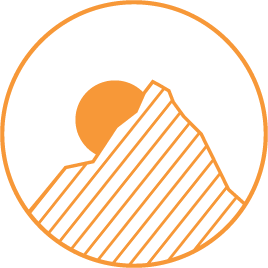Document #8 - Murat Adash, Josefina Camus, Katharina Ludwig and Kate Pickering -
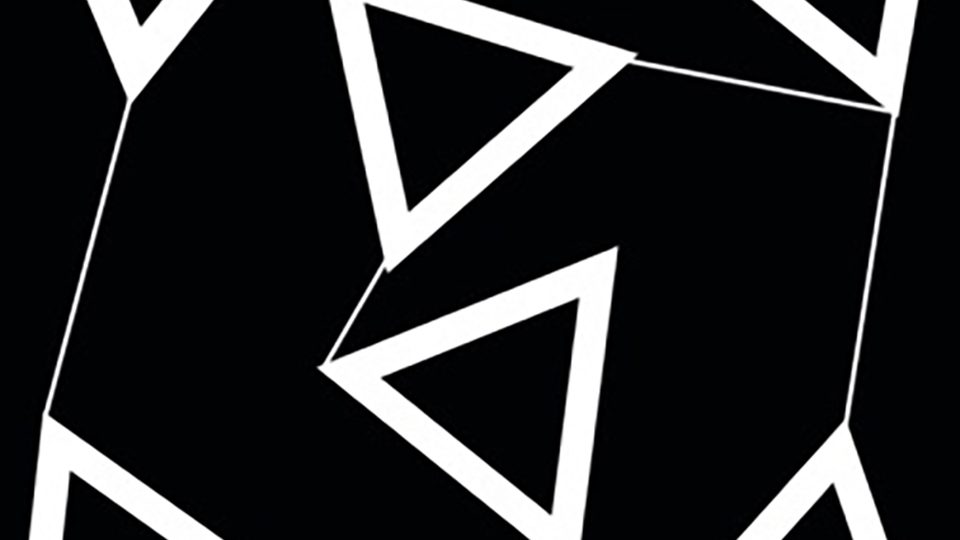
Murat Adash, Josefina Camus, Katharina Ludwig and Kate Pickering
Document #8 - 1 March 2019
INTRODUCTION TO THE SIX VIEWPOINTS:
The Artist as Observer / Participant
Originated by dancer/choreographer, Mary Overlie, The Viewpoints deconstruct the materials used in performance: space, time, shape, emotion, story, and movement, opening up their infinite possibilities. The study of the Viewpoints introduces performance makers to a clear vocabulary of materials to spark research or new perspectives on their own work.
This session will include a brief introduction to the theoretical framework of the Viewpoints as well as taking a closer look at the materials through improvisation and experimentation.
Mary Overlie/ Six Viewpoints Website: sixviewpoints.com
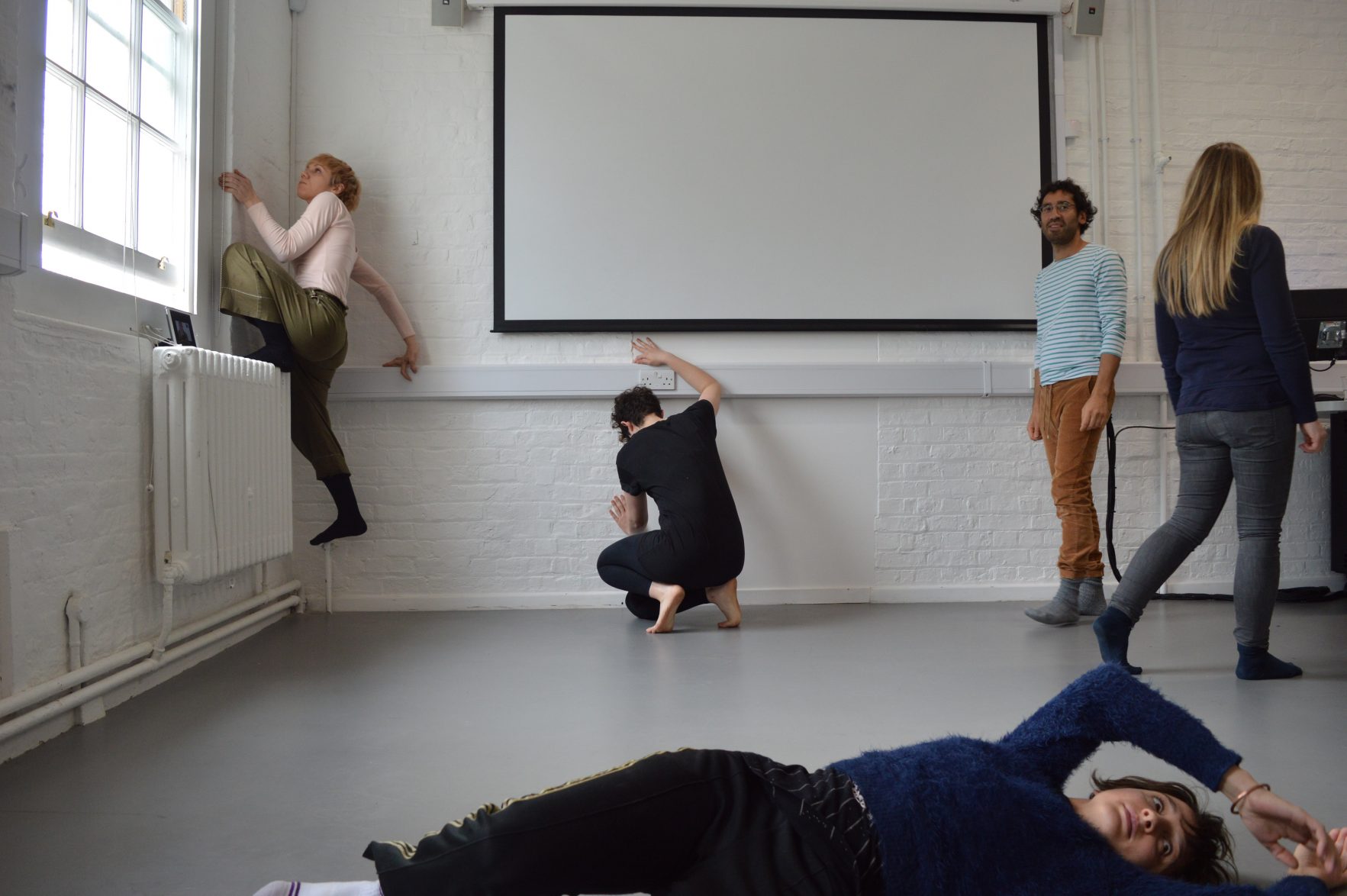
Excerpts from a conversation following the workshop:
Deborah: “If you are doing a solo it’s like -oh I am alone, it’s just me there- but it is actually not true because this room is, if we put that on a horizontal as well, why is the actor, the performer more important than the room actually? To me, you know, I just start thinking about our relationship to the earth and how human beings have put themselves on the top of that hierarchy and control the earth, how do I know this isn’t a sentient being right? And what is on the stage actually helps me tell the story, it is communicating just as much I am communicating so this is also a really beautiful practice where I can question what is a thing and what isn’t a thing? Well, actually everything is a thing and we are all connected to all things!”
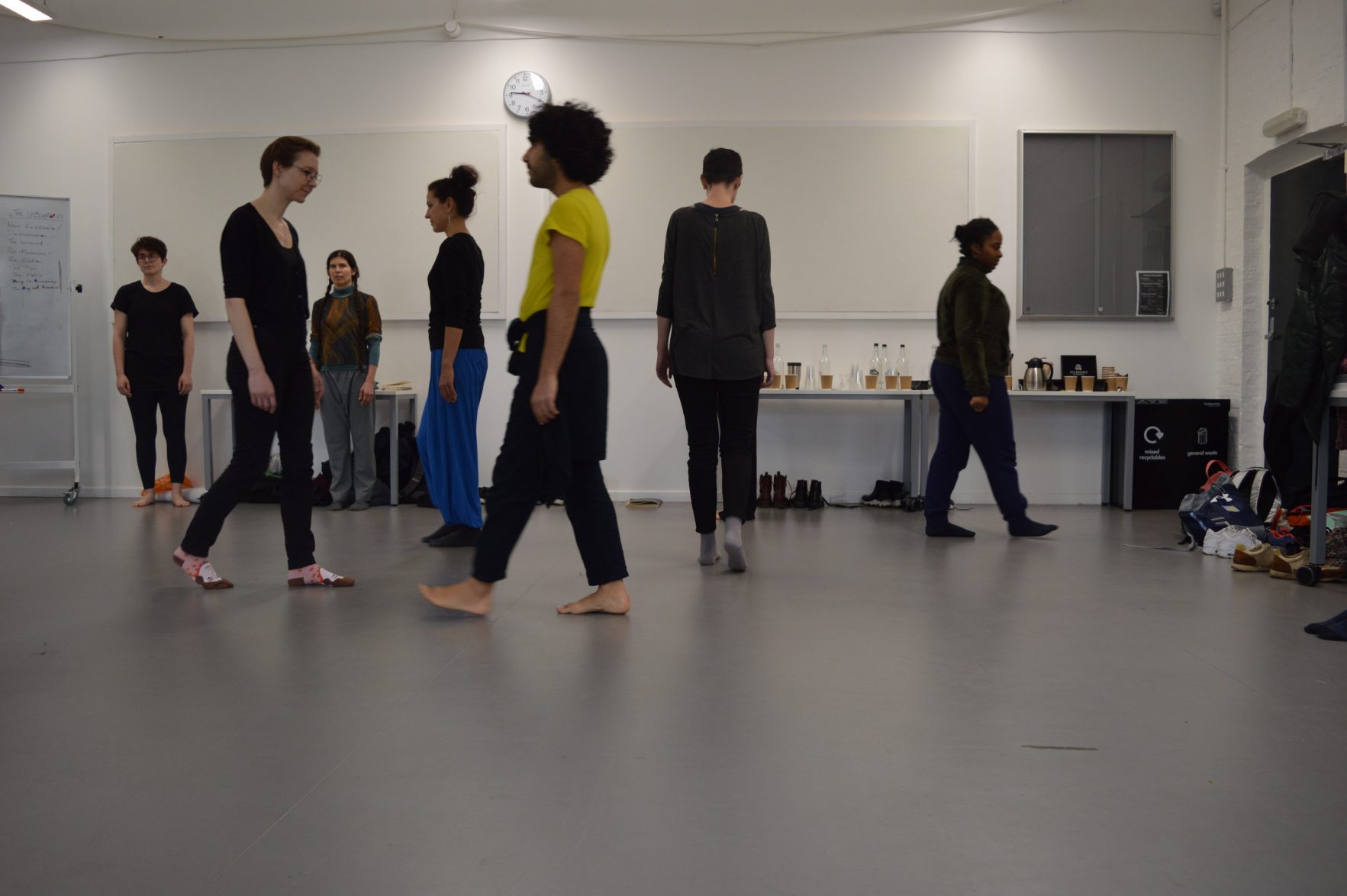
Ria: “It is also super important to embody for those of us who tend to be more analytical, it is so important to embody because actually we are one item… the body mind separation… we still live in this world that really encourages the separation of the mind and the body but what if this body is the mind and the mind is the body?”
“Through that sort of change of perspective you can start looking at the role of the artist, and you can question is the artist’s role to create, (to) add? Or is the artist’s role to observe and participate in the world with other artists, is it always this sort of making new things or is it making things new? Or both?”
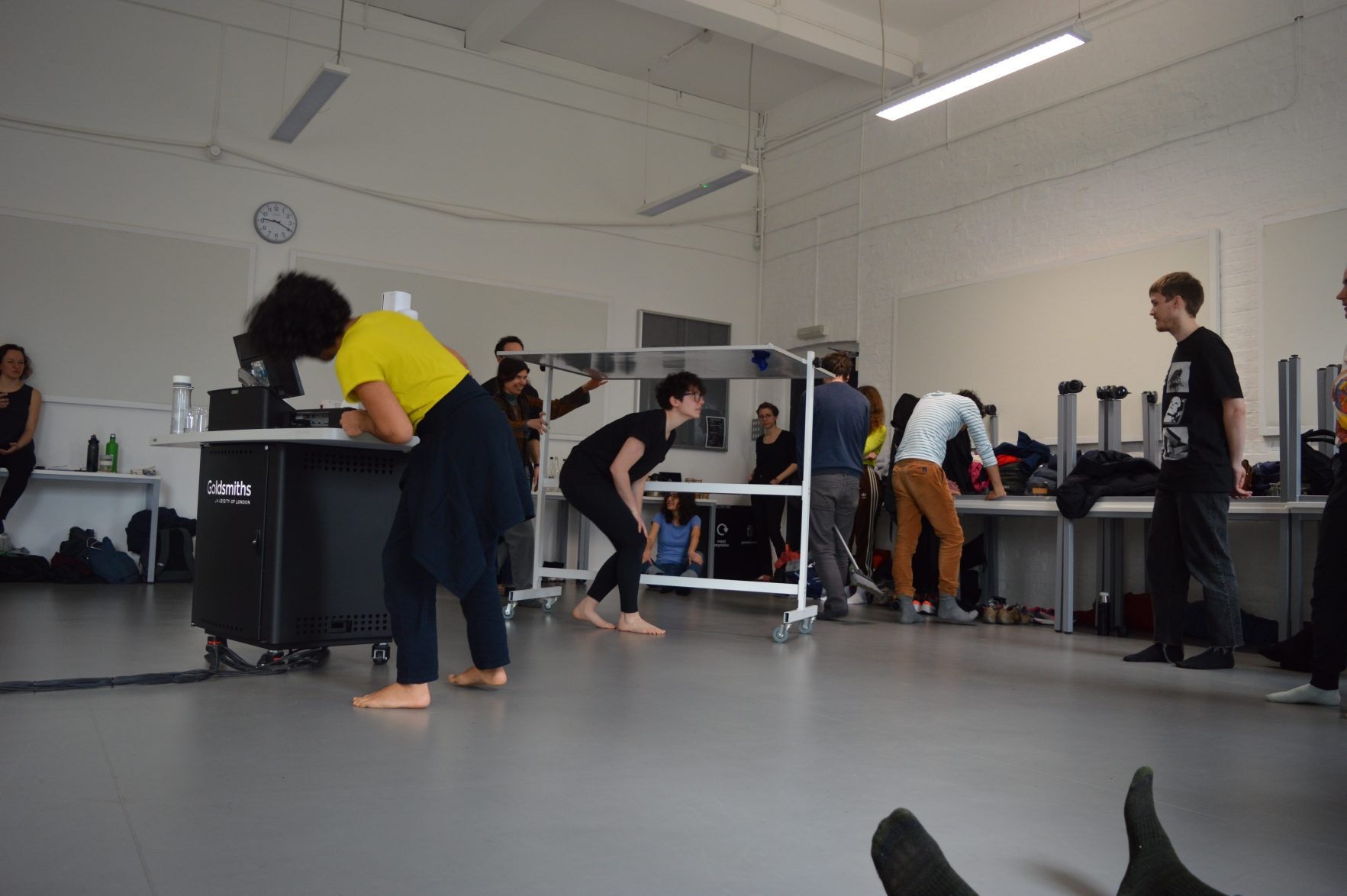
Katharina: “This exercise with the focus points, I felt most comfortable in the very closest one actually, and then I was trying out the others and I saw how much detail and things I am actually missing by just staying in this very close thing for writing, for research, and it is actually good to be able to change between these different things. So this was very exciting. Where is the inside? Where is the outside? Where does it start?”
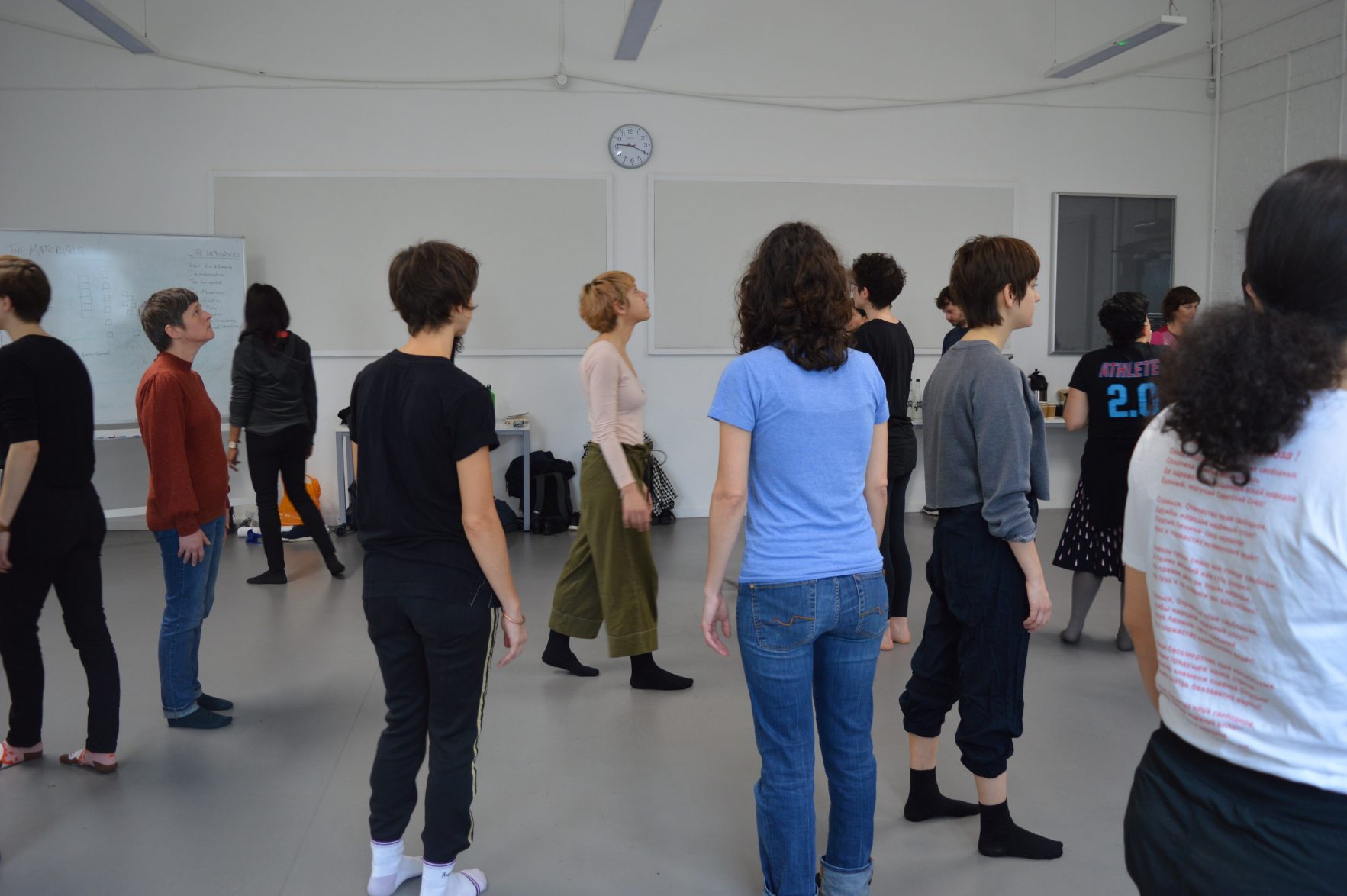
Murat: “I think with the grid, it’s interesting to ask a question of what that means, because when you usually think of grids and straight lines and all these things, you immediately think of mechanic, the military, there are immediately associations of something that is other than free and open and improvised, but actually, I don’t think so, as well. I am thinking of the constellations that we did yesterday, and especially in a ecological sense, and also of geometries of the DNA to the most minute kind of, how organisms are made up, that are actually quite intricate, that include the inside of our bodies in very specific sort of choreographies that are actually quite geometric, I guess also depends what the focus is or the attention? It is not necessarily just the mechanic, the sort the skeleton of the grid, but what is moving between the grid?”

Kate: “One of things I was thinking when I was walking around the space, in the ‘walk and stop’, and I started to noticed things, like the texture of the walls and thinking about, because in my writing the walls in the Megachurch develop pores and start to sweat, and also the foundations develop holes, as I was looking at things I started to see the tubes as veins, because when you start to look at something really closely and you start to feel like it’s an extension of you, does anyone else is doing this or is just me? And imagining the room transforming into, like an extension of my body”.

Josefina: “I work with this idea of instant performance or real time composition, so I have like a very simple score but all what I do in the performance or experience is in the moment, so I work more with the idea of noticing what is already happening and balancing all the time what I do and what I try to not do, so somehow for me was very clear this kind of attention to what is already there”
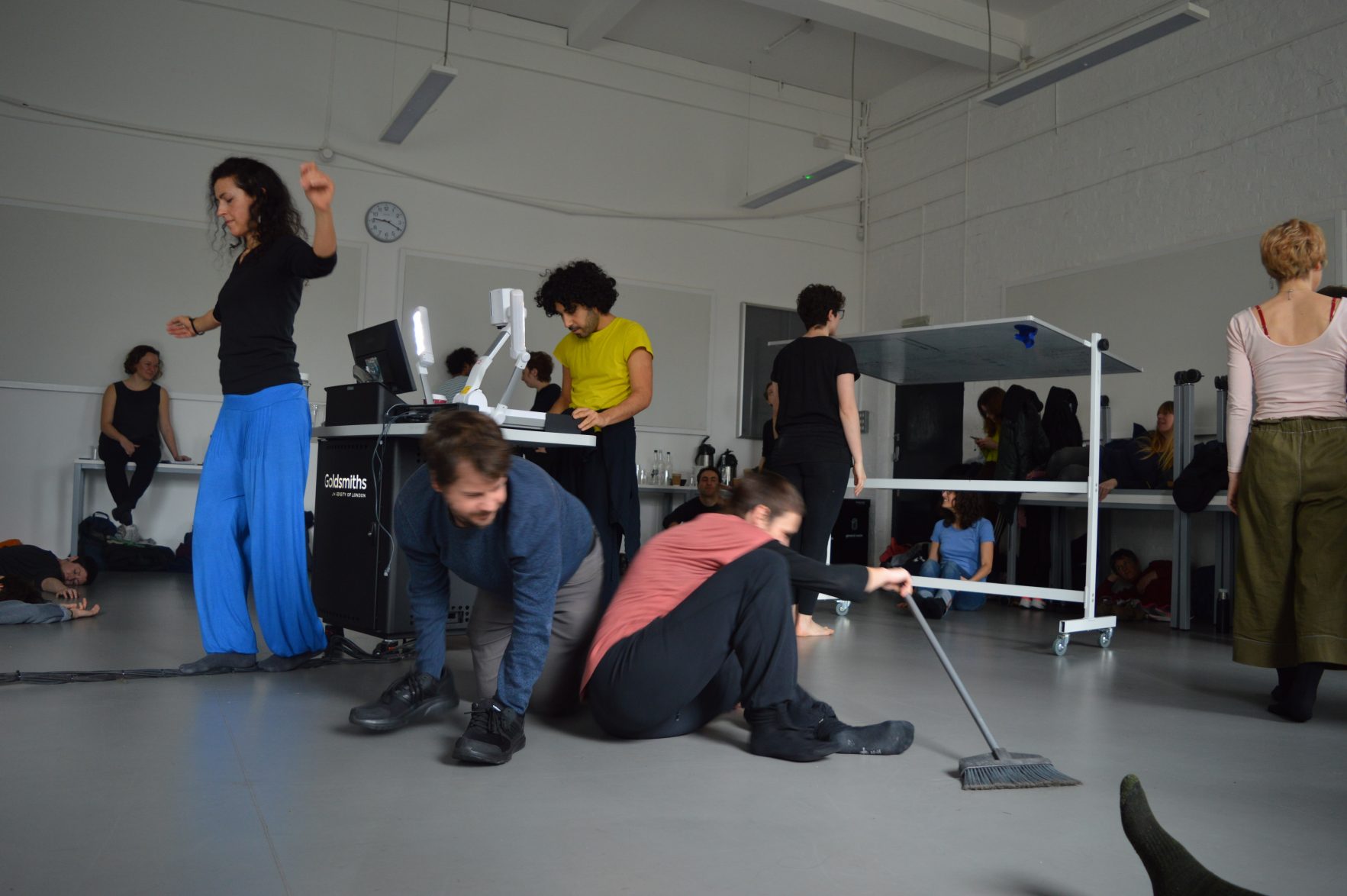
Biographies
WORKSHOP LEADERS
Deborah Black is a US-based multi-disciplined embodied artist and teacher. She has trained with both Mary Overlie and SITI Company. From 2013-2016 she was based in Europe teaching The Viewpoints at the Fontys Hogeschool voor de Kunsten in Tilburg (NL) as well as workshops in Holland, France, Germany, Belgium, and the UK. While previously living in NYC for nearly 15 years and working with Deborah Hay, Siobhán Cronin, Joe Williams, and the SITI Company, she began her current research of collective and individual daily practices, conflict management, the space between dance and theatre, and ecology. She has a BFA in dance from NYU's Tisch School of the Arts.
https://www.deborahblack.net
Ria Samartzi is a London-based theatre maker from Greece. She trained in Physical Theatre at East 15 Acting School, on the SITI Company Conservatory(NYC), in Viewpoints with Mary Overlie and in directing with StoneCrabs Theatre Company. Her work includes directing, devising, performing and dramaturgy.
https://www.riasamartzi.com
ARTIST RESEARCHERS
Murat Adash The performance-based work of artist Murat Adash seeks to investigate relations and frictions between corporality and spatiality. Through choreographic systems, his practice explores the potential of movement for reflecting on social relations. His practice-based research project “Edges of the Body: Camouflage and the Performative Dimensions of Morphology” in the Department of Art at Goldsmiths, University of London, aims to develop a novel concept of camouflage, as processes through which the self is negotiated in and through space, in relation to choreography.
https://muratadash.com/
Josefina Camus is a London based artist originally from Chile. Her interdisciplinary work transits between performance, choreography and installation. Her PhD research at the Department of Art at Goldsmiths looks at corporeality as an unstable material and energetic network. Using alchemical principles, her work explores the transformation of matter; transmutation between materiality and immateriality, resonating into physical and psychic processes. Using sculpture and performance, her installation/performance devices functions as active environments navigating different states, disparate forces and crossed intensities. Her work has been shown and performed in Paris; Le 6B, Mains d’Oeuvres, Micadanses, London; TripSpace, Sadler’s Wells, Tate Modern, Santiago; Centro Cultural de España, NAVE and Casa O, among others.
http://josefinacamus.com/
Katharina Ludwig is an artist and writer working with text, installation and objects. Her research in the framework of the Art Research programme at Goldsmiths is concerned with narrative holes in women’s writing and the temporalities of the "wounded text”. Katharina tries to activate textual holes as a subversive feminist practice of resistance with insurrectional potential. Her work has been shown, performed or read nationally and internationally and is published by a.o. 3am Magazine, Zeno Press, Chris Airlines, Ma Bibliotheque (forthcoming)
www.katharinaludwig.com
Kate Pickering is a London based artist, writer and PhD researcher in the Departments of Art and Visual Cultures at Goldsmiths. She investigates belief as embodied narrative through research into Evangelical megachurches, focusing on how a body is dis/oriented within the megachurch through material, visual and fabulatory conditions. This research is extended into writing and staging site based readings of fiction. Pickering has exhibited nationally (Tenderpixel, TAP, Bloc Projects, Bury Art Gallery, ICA) and internationally (Bangkok Art and Culture Centre, Thailand; Espacio Enter Canarias Festival, Spain; Four Boxes, Denmark; Bangalore Foundation for Indian Contemporary Art, India; and Moon Event Space, China). Her writing has been published in Dual Mirage, Misery Connoisseur, Yellow Pages (Copy Press), EROS journal and in online journal K[]NESH Space.
https://kate-pickering.com/
